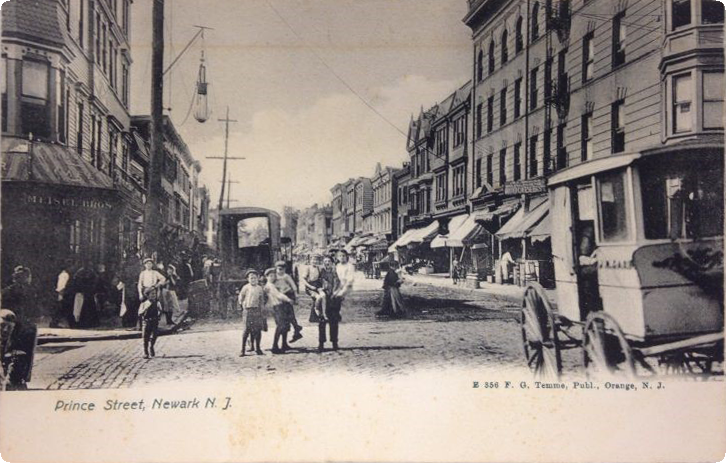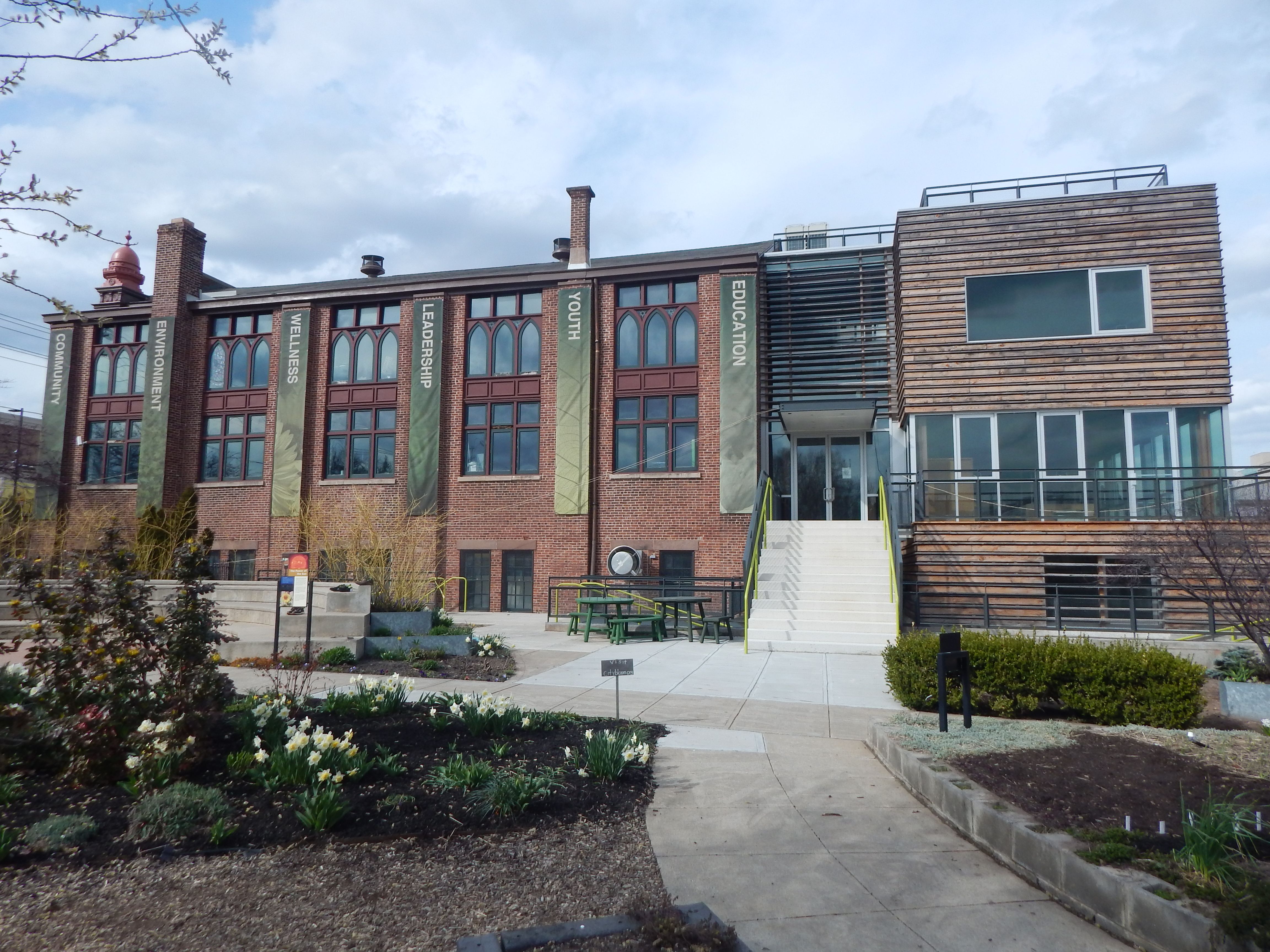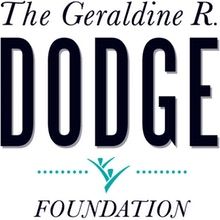History of Oheb Shalom Synagogue
In 1884, Oheb Shalom erected a new brick synagogue—and future home to the Conservancy’s Main Building—directly across from the frame structure. At the dedication ceremony on September 14, three young women led the procession to carry the Torah scrolls across the street.
In the 1880s and 1890s, Eastern European Jews began to arrive in the US. Prince Street south of the Conservancy became Newark’s version of New York’s Lower East Side. By the early part of the 20th Century, large numbers of poor Jewish residents lived in crowded cold-water flats with street-level retail and apartments above.
As Prince Street became more commercial, Oheb Shalom moved in 1911 to a larger building on High Street (now MLK Blvd.). In 1913, its Rabbi Hoffman assisted in founding the Conservative Movement’s association of congregations. Oheb Shalom relocated to South Orange in 1958.
A second Jewish congregation, Adas Israel and Mishnayes, purchased the Prince Street synagogue and worshipped there until 1939. It became known as the home of famous cantors such as Berele Chagy. This congregation moved to the Weequahic neighborhood and later merged into Congregation Israel in Springfield. Metropolitan Baptist Church, one of Newark’s largest and most influential African American congregations, purchased the Prince Street building and occupied it from 1940 to 1993 until it moved around the corner to its new church.
In the early 1990s, members of present-day Oheb Shalom and the Newark Preservation and Landmarks Committee led the successful effort to save the Prince Street Synagogue from the wrecker’s ball. After a Trenton hearing and two years of tense meetings, the City of Newark agreed to issue a fair RFP for the property and awarded it to Greater Newark Conservancy. The transaction was consummated in 1995, followed by a five-year effort to obtain title to the adjacent land.
Historic Status
The Conservancy’s Main Building is the oldest surviving structure built as a synagogue in Essex County and one of the 35 oldest in the USA. Its façade features a rare example of Moorish Revival architecture also utilized in 19th Century synagogues in New York, Cincinnati, Budapest and Florence. The building is listed on the New Jersey Register of Historic Places.
Board Connections
Mark Gordon, the Conservancy’s longest-serving board member, actively participated in efforts to save the Main Building from demolition. He has written three articles on 19th Century synagogues for the Journal of American Jewish History. Rachel Schwarz is a direct descendant of founding Rabbi Isaac Schwarz mentioned above. In 2004, Rachel’s cousin Sara Schechner designed the Conservancy’s sundial. Sam Convissor’s grandfather was cantor for Congregation Adas Israel and Mishnayes.




















